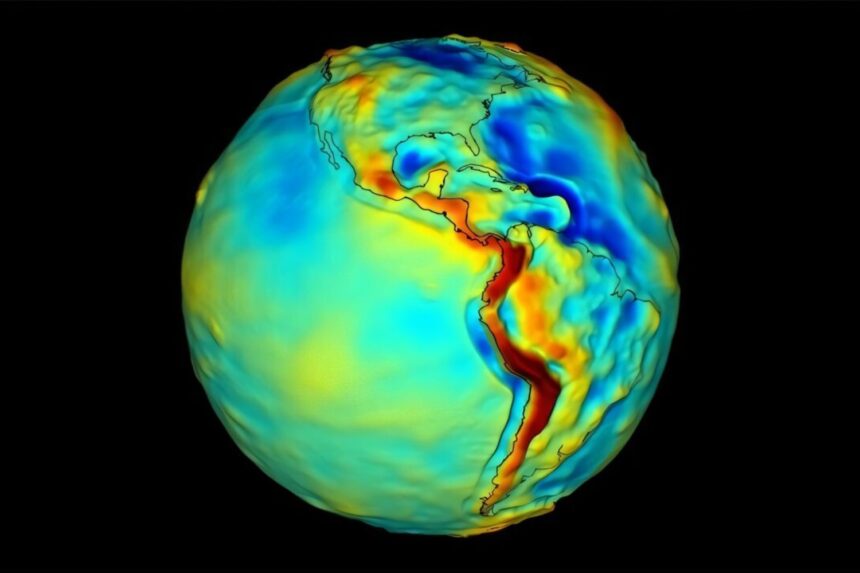Buckle up, nerds: NASA is building the first quantum gravity sensor for space—a suitcase-sized instrument that could soon be measuring everything from subterranean water to hidden reserves of petroleum, all by watching how clouds of atoms act under the force of gravity.
Researchers at NASA’s Jet Propulsion Laboratory (JPL), along with several partners, are developing the project, dubbed the Quantum Gravity Gradiometer Pathfinder (QGGPf). As its name indicates, QGGPf is a gravity gradiometer, which measures how the acceleration of one object compares to that of another nearby object; the difference in the objects’ acceleration corresponds to gravitational strength acting on each object. When gravity is stronger, the objects—a.k.a. test masses—fall faster.
Earth’s gravity isn’t constant—it changes subtly all the time as mass shifts around the planet. Geological processes like tectonic activity, glaciers calving, or aquifers draining can slightly nudge gravitational forces in one area or another. On our physical scale, those shifts are imperceptible—but not to scientists’ ultra-sensitive instruments.
Those tiny variations aren’t just a quirk of nature—they have real utility for navigation systems, natural resource mapping, and even national security. With the right sensors, scientists can use gravity to “see” what’s hidden under Earth’s surface. The sharper the gravity map, the better we understand what’s going on underground.
“We could determine the mass of the Himalayas using atoms,” said Jason Hyon, chief technologist for Earth Science at JPL, in a NASA release. QGGPf will specifically use rubidium atoms, cooled to just above absolute zero, which behave more like waves than particles to make its measurements from out in space.
Here’s where the quantum magic kicks in: QGGPf uses two clouds of ultra-cold atoms—the test masses—and compares how fast they fall relative to one another. The faster fall indicates stronger gravity in that location. The difference in acceleration between the two clouds tells scientists where gravitational anomalies lie.
Unlike older gravity gradiometers, QGGPf uses quantum physics to ensure repeatability and precision. “With atoms, I can guarantee that every measurement will be the same,” said physicist Sheng-wey Chiow. “We’re less sensitive to environmental noise.”
QGGPf packs those keen measurements into a tiny package by spaceflight standards: the device weighs in at just 275 pounds (125 kilograms) and takes up about 0.3 cubic yards (0.25 cubic meters).
Quantum gravity gradiometers could be 10 times more sensitive than classical gravity sensors, according to the NASA release. That means sharper data, fewer blind spots, and way more insight into what’s happening below our feet—and perhaps on other planets in the future.
QGGPf is set to launch by the end of the decade, and its primary mission is to prove out the technology—hence the “Pathfinder” in its name. “No one has flown one of these before,” said JPL postdoc Ben Stray, in the same release. “We have to test it in space to know what it’s really capable of.”
If QGGPf flies and performs as hoped, we may not only map our own planet with unprecedented detail—we could change the way we peer into the gassy and rocky guts of distant worlds.
Read the full article here












